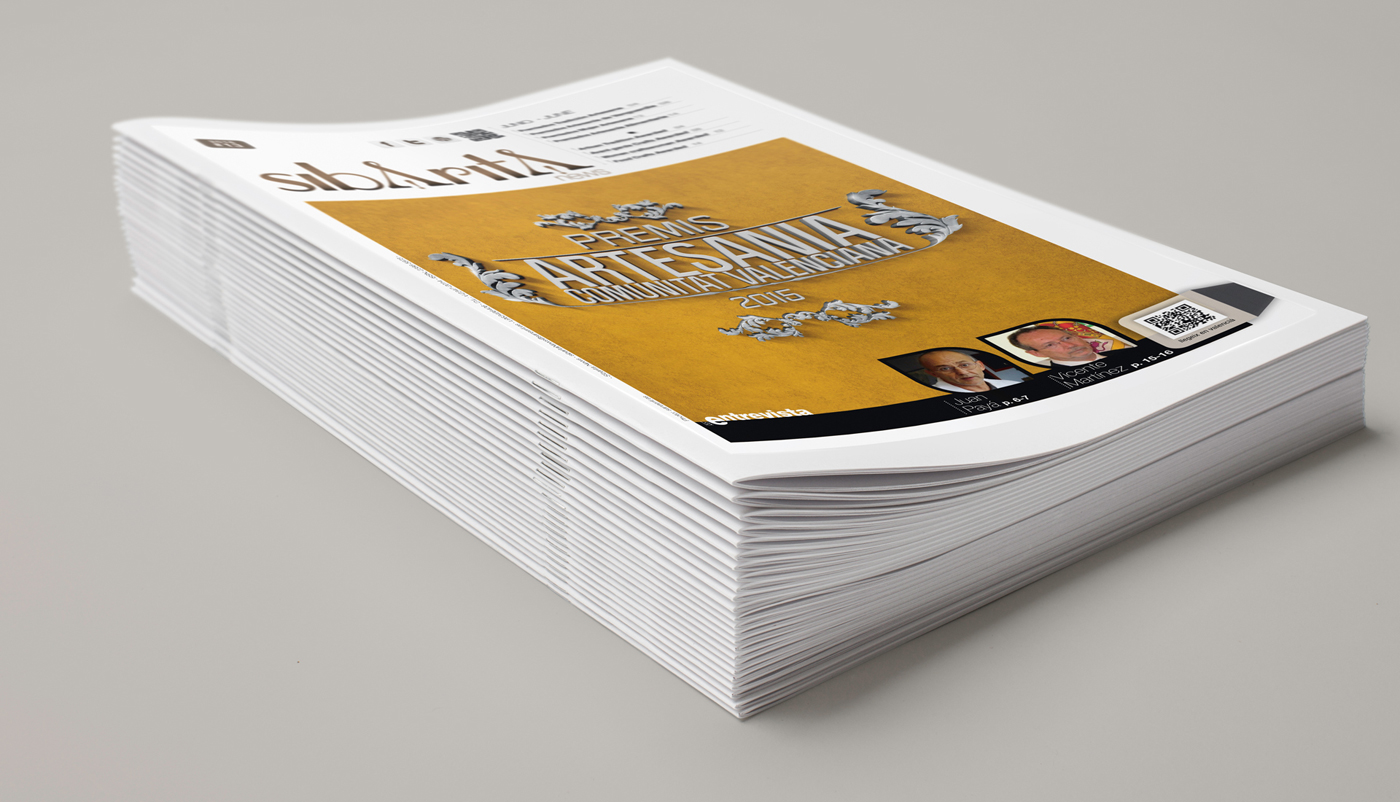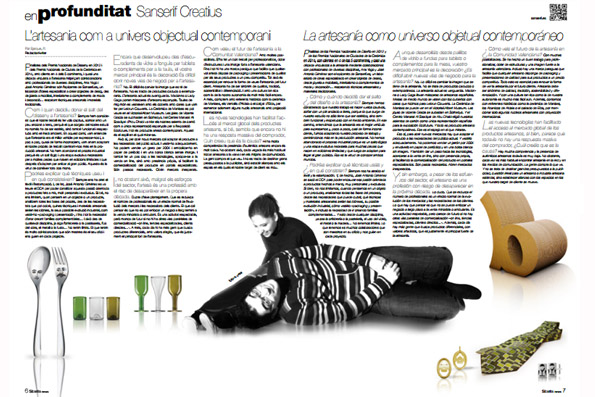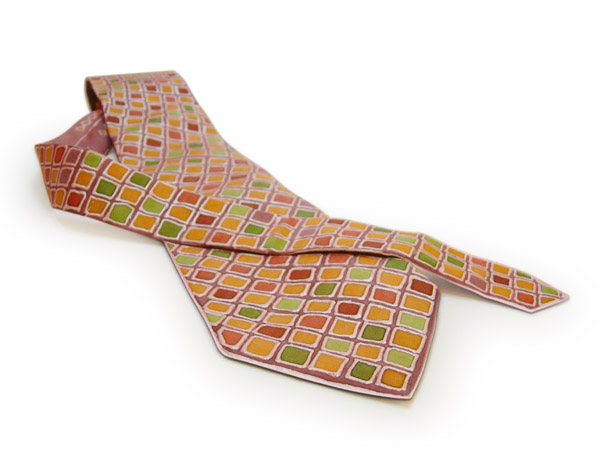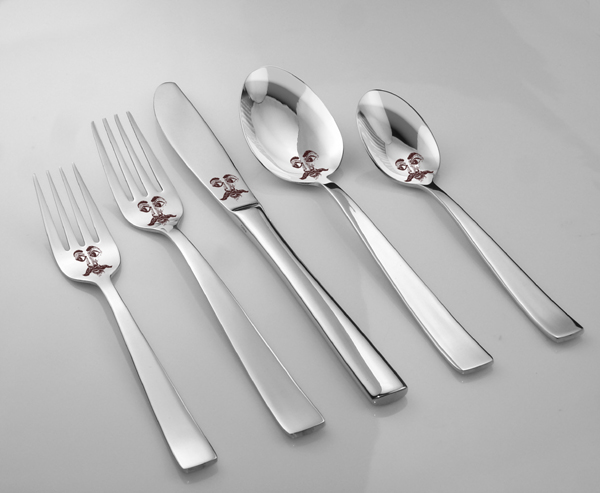
15 Apr Interview with Sanserif.es in Sibarita News
Sibarita News · Marzo 2016 p.6-7
Interview published in the 12 issue of Sibarita News Magazine, March 2016, in which both the relationship between Sanserif.es and the craft industry and its vocation to create its own universe of traditional rooted objects for the contemporary consumer are discussed.
The finalists of the National Design Awards in 2012 and the National Ceramics Cities Awards in 2014, with clients in 4 of the 5 continents and almost a decade linked to craftsmanship through proffesionl collaborations in various disciplines ―Ana Yago and José Antonio Giménez― are the epicenters of Sanserif.es. This is a laboratory of ideas where they work on to create objects of desire, from jewelry to furniture, interior design, fashion, and decorative accessories… and all that by rescuing craft techniques and traditional materials.
How and when did you decide to make the leap from design to craftsmanship? We have always considered that our work is to make ‘captive flights’ and to dream with one foot anchored to the ground. And that’s because what comes out of our studio must not only be aesthetic, but also functional and respectful for the environment. On this path, we understood that craftsmanship was the best vehicle to express ourselves and, little by little, and almost unconsciously, we adapted our work process to focus more on the handcrafted production. We have not abandoned the industrial process though because it is a logical leap and a necessary evolutionary stage for many pieces that are born in limited editions and then adapted to reach the consumer. It is the virtue of be familiar with both worlds.
Could you explain what techniques you use and what they consist of? We have always been attracted to textiles and printing. And, in fact, José Antonio Giménez took the DCA to be able to direct that passion into handmade, very personal, and exclusive products. When we think of an object or a product, we analyze all the phases of the process, from the needs it can cover, which artisanal techniques and materials would be ideal, its possible industrial evolution, how to dress it, that is packaging and presentation, and even the need to create complementary families… And this from any discipline you can think of, goldsmithing or pastry making, the use of glass, metal, or wood… We have no limits and we have lots of collaborators who are masters of their craft and guide us in each project.
Although you create everything, from glass chopsticks to tablet cases or table accessories, your main market is decoration. Is it difficult to open up new business opportunities for craftsmanship? No. What is really difficult is to change the image people have of handicrafts. It’s not about outdated or extemporaneous products. Today’s crafts are avant-garde: Madonna and Lady Gaga wear masks made by Spanish artisans; tables all over the world are dressed in the cutlery with faces that we made for Lebrun Couverts; ceramics from Manises can be seen in the Victoria & Albert Museum; Vicente Gracia’s jewelry is auctioned at Sothebys; and the Manarat Al Saadiyat Centre in Abu Dhabi chose our cardboard seats as the only Spanish representation for the Ecofuture exhibition. And all those were contemporary artisan product.
But of course, to open up new markets, you have to adapt the product to the needs of today’s society and dress it appropriately, so it feels appealing. We can’t sell a vase for €200 and wrap it in newspaper and a white bag with cero identity. We must also take a step towards technology, approaching online sales. If not with our own presence, by facilitating the marketing of the product on specialized portals. These are necessary steps. They open up unexpected markets.
And yet, despite the efforts of the industry, the artisan is a profession at risk of disappearing in the next decade. I don’t think so. A reduction in the number of professionals is an obvious effect of the evolution of markets and customer needs but think of a long-term business on retailing or hawking. It is a respectable activity, but it has no future if there are no other parallel marketing channels ―online, specialized shops, direct customers―. Moreover, every day there are more and more people looking for differentiated products, with added value, which is precisely the main strength of craftsmanship.
How do you see the future of craftsmanship in the Valencian Community? With many possibilities. Very good work has been done to professionalize, provide the necessary structure and a strong image for Valencian crafts. There is even an umbrella brand that makes it easier for any artisan to have quality packaging and presentations for their products at a competitive price. All this is essential to renew the way craftsmanship is seen by the future customer eyes. Crafts should be a synonymous of quality, tradition, sustainability, and differentiation. And with a culture as rich as ours, this is even easier. Moreover, we have historical references such as the ceramics of Manises, the fans of Aldaia or the footwear of Elda, to mention just a few of the craft nuclei with international projection.
New technologies have facilitated access to the global market for artisan products, although it seems that there is still not a massive response from buyers, what do you think is the cause? There is a lot of competition, and the presence of authentic artisans is still very low. However, it is becoming more and more common to find crafts on the web and in the media. But people buy what they see, and it is not a question of allocating large budgets to advertising ―which is, in fact, unrealistic for a standard artisan or craft industry. But it is possible to establish alliances with the spaces in which our target customer moves.





